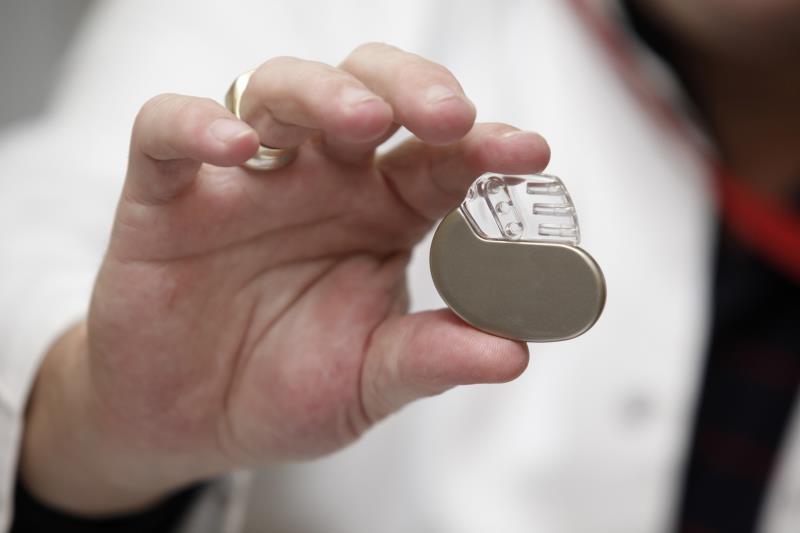Novel device on par with standard care in easing pocket hematoma after CIED implantation





A novel pocket compression device has shown similar efficacy to conventional methods in preventing the occurrence of pocket hematoma, making it a potential alternative for reducing complications following cardiac implantable electronic device (CIED) implantation without additional adverse effects.
“Notably, our study revealed a very low incidence of clinically significant pocket hematoma,” a serious complication that normally occurs after CIED implantation, according to researchers.
A total of 262 consecutive patients who underwent CIED implantation between January and November 2023 were enrolled in this study. Of these, 16 were excluded, and four had insufficient data on the primary outcome, which is the incidence of pocket hematoma 24 h postprocedure.
The remaining 242 patients were randomized to receive either the novel compression vest with a pressure cuff (experimental group) or conventional sandbag compression (standard group). The baseline demographic data did not significantly differ between the two groups.
Pocket hematomas were then categorized as follows: mild (grade 1), moderate (grade 2), and severe (grade 3; requiring intervention or prolonged hospitalization).
Patients in the intervention group had a median 15-h duration of pocket compression device application, while those in the control group received sandbag compression for 2 h.
Antithrombotic drugs
The proportion of patients with concurrent use of antithrombotic agents was comparable between the experiment and the control groups: warfarin (23.3 percent vs 20.5 percent; p=0.643), DOACs (7.5 percent vs 9.0 percent; p=0.816), DAPT (9 percent vs 9 percent; p=1.000), single aspirin therapy (24.2 percent vs 25.4 percent), and single clopidogrel therapy (9.2 percent vs 7.4 percent; p=0.648).
Coagulation laboratory profiles, including platelet count and International Normalized Ratio levels, showed no significant differences. Moreover, the majority of CIED implants were placed in the prepectoral pocket.
The incidence of pocket hematoma at 24 h after the procedure did not significantly differ between the intervention and the control groups (26.7 percent vs 19.7 percent; p=0.224). [Sci Rep 2025;15:3214]
Likewise, the rates of grade 2 hematoma were low and comparable (2.5 percent vs 0.8 percent; p=0.368), and no grade 3 hematomas occurred. Skin reactions and patient comfort were also similar between the two groups. Notably, current oral anticoagulation use was the only predictor for the occurrence of hematoma.
“The importance of our results underscores the need for careful attention to prevent intraoperative bleeding during CIED implantation, regardless of the pocket compression measures employed,” the researchers said.
Hawthorne effect
These findings are in contrast to those of previous clinical studies, which showed significant differences in the rate of hematoma occurrence between the compression device group and the control group. [Acta Cardiol Sin 2019;35:320-324; J Interv Card Electrophysiol Int J Arrhythm Pacing 2019;54:247-255; Front Cardiovasc Med 2022;9:817453; J Interv Card Electrophysiol Int J Arrhythm Pacing 2017;49:197-204]
Earlier studies also reported grade 2 hematomas ranging from 4–6 percent and grade 3 hematomas ranging from 1–7 percent. [J Interv Card Electrophysiol Int J Arrhythm Pacing 2022;63:275-281]
“One possible explanation is that the very low incidence of significant hematoma in our study may have been influenced by the Hawthorne effect,” which states that individuals change their behaviour when they perceive that they are being observed, the researchers said. [Occup Med 2006;56:217]
“The Hawthorne effect may be more prominent in our study due to closer patient monitoring, frequent interactions with the healthcare team, and heightened adherence to care protocols,” they added.
“These conditions likely fostered greater awareness and compliance among patients and providers, reducing complications like grade 2 and 3 hematomas,” the researchers said.